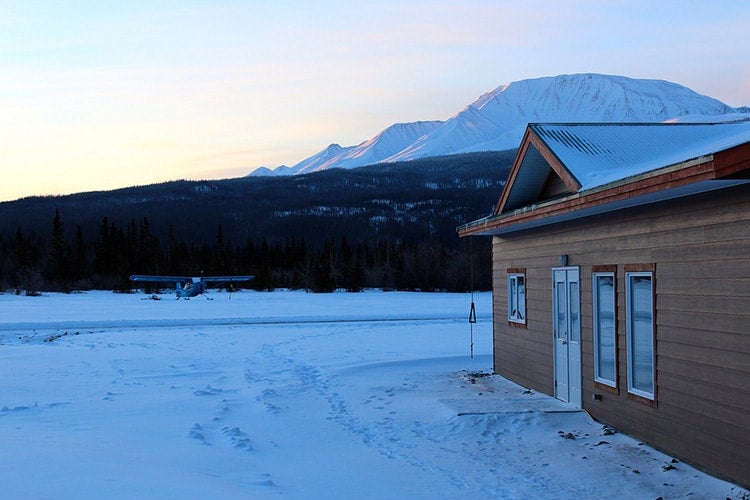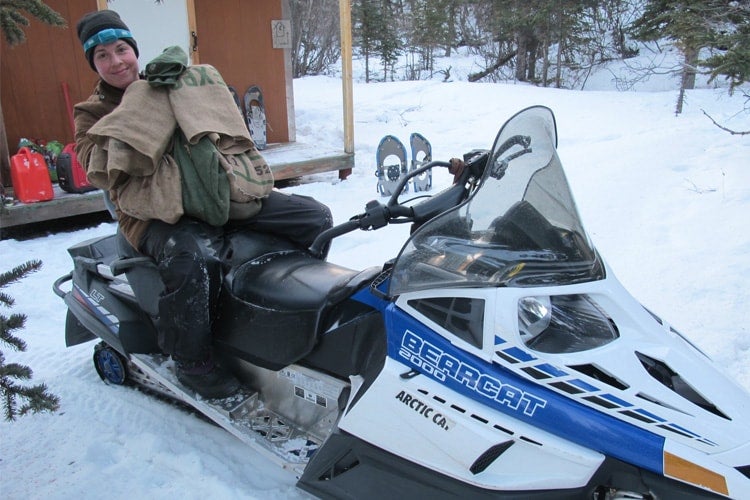A harried life: U of T researchers study stress in snowshoe hares, apply it to humans
Published: May 2, 2017
Pretty much everything in the boreal forest is trying to eat the snowshoe hare.
It's preyed upon by Canadian lynx, foxes, coyotes and various birds. Red squirrels and Arctic ground squirrels even kill its babies.
It’s no wonder that, with grim odds of survival, the snowshoe hare experiences stress. U of T Scarborough researchers are looking at the role of stress in snowshoe hares and what traits baby hares inherit from their stressed-out moms.
They're looking at whether stress triggers programming effects or changes in gene function for hare offspring, and they're hoping the hares may provide some answers for stressed-out humans and their babies.
“The idea is that if this effect happens in snowshoe hares, it may also be at work in other organisms,” says Rudy Boonstra, a professor of biology at U of T Scarborough.

Researchers work out of the Kluane Lake Research Base in Yukon without electricity and running water while they study snowshoe hares
Boonstra has been doing field research in Canada’s north for more than 40 years and helped co-author a comprehensive book on the boreal forest ecosystem. In the early 1980s, he started thinking about the role stress plays in natural environments, particularly in how ecosystems are organized.
Snowshoe hares followed a somewhat predictable 10-year population cycle so they made good candidates to study the indirect effects of stress, Boonstra says.
“The evidence up until that point was that predators were calling the shots,” he says. “Once the hare population was abundant, predators were critical in driving down their numbers.”
During the decline phase of the population cycle, which lasts about two to three years, pretty much every snowshoe hare dies at the “tooth or talon” of a predator, says Boonstra. So the question became whether the hares are smart enough to know that a predator was likely to kill them.
“If you look at the stress levels they’re experiencing, clearly, they do,” he says.
Not only do hares show signs of stress in their blood and energy levels, that stress also influences how they reproduce. Past research in Boonstra’s lab has found that stress experienced by mothers can be inherited by their offspring. What’s more, during periods of very high predation, which happens at the peak of the hare population cycle, the number of litters per summer begins to decline.
“You would think they would be breeding like mad since they’re being killed like mad, but in fact it’s the opposite,” he says. “The fear reduces reproduction.”

Biology Professor Rudy Boonstra near Kluane Lake Research Station in Yukon (photo courtesy of Rudy Boonstra)
Boonstra is part of a larger team affiliated with U of T Scarborough’s Centre for the Neurobiology of Stress and the Centre for Environmental Epigenetics and Development that looks at how the brain and nervous system are affected by stress.
He is trying to determine if there are programming effects that somehow get encoded in hare offspring. In other words, do mothers during intense periods of high predation pass something on, and are their offspring fundamentally different than those whose mothers didn’t experience the same levels of stress?
And, he wonders, are there lessons for humans, too?
“A pregnant mother during war time doesn’t know if she will survive so she’s experiencing an enormous amount of anxiety,” he says. “We want to know whether that anxiety passes through the placenta, and if so, does it program the child in a certain way.”
Sophia Lavergne, a PhD researcher at U of T Scarborough, is also studying snowshoe hares. Affiliated with Associate Professor Patrick McGowan's epigenetics lab, she's taking a deeper look at the long-term effects of stress on showshoe hares.

Sophia Lavergne, a PhD student at U of T Scarborough, is studying snowshoe hares to explore the long-term consequences of stress (photo courtesy of Sophia Lavergne)
She travels to the Kluane Lake Research Station in Yukon each year – for two weeks during the winter and four months during the summer – to study what baby snowshoe hares inherit from their moms.
“We know a lot about stress in the lab, and it’s always assumed to be negative. But, a lot of this stress may be preparatory for the hares,” she says, adding that it may help offspring adapt for life in a harsh environment. “It’s really important to test this in a natural system where there is a host of different stressors like fluctuating temperatures, predators, food scarcity and other challenges in the environment.”
Read more about Lavergne's research



